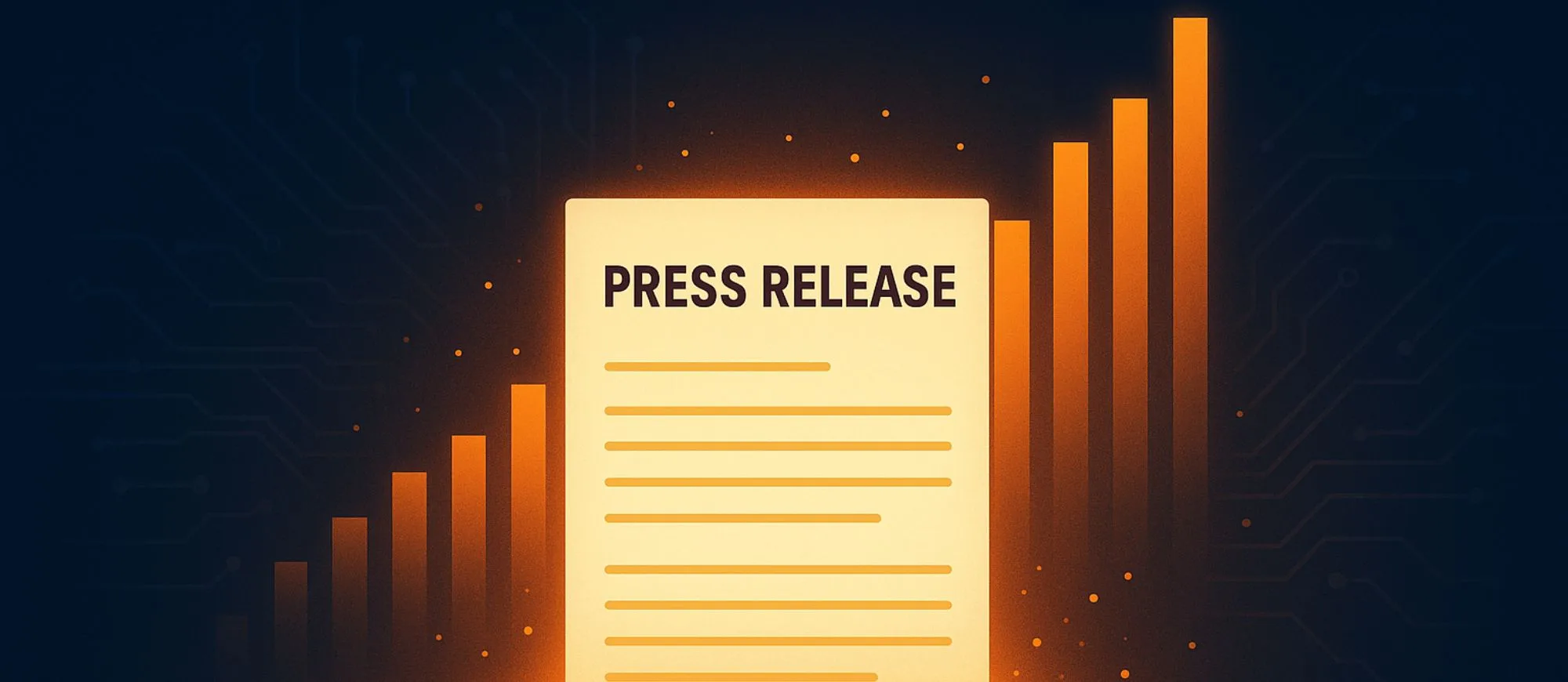Each week we’ll gather headlines and tips to keep you current with how generative AI affects PR and the world at large. If you have ideas on how to improve the newsletter, let us know!
What You Should Know
The Press Release Isn’t Dead. A New Report Shows AI Just Made It More Important
Despite new channels and many declarations of its death, the press release lives on. It’s even seen a new surge in interest thanks to AI search.
While press releases are generally cited less frequently in AI answers than media and brand content, they can have influence, especially if they document a product’s features and use cases, a company’s milestones and awards, and original research findings.
But PR Newswire’s recent 2025 Global State of the Press Release Report shows most communicators aren’t taking advantage. It finds that 24% of communicators in North America have not yet updated their press release strategy for AI search, and 42% are still evaluating the impact of AI search on their strategy.
At its core, the press release has always been about building credibility through an account of what’s new and why it matters. That purpose hasn’t changed, but discovery has. AI search is a fast-growing channel that Semrush says has the potential to overtake traditional organic search by 2028.
It’s important to evaluate whether press releases are influential in the AI search answers you want to show up in, and determine the types of releases and topics that are cited most frequently in your space. (Sign up for your free AI search audit.)
Based on the results, you might discover your time is better spent landing media opportunities, creating content, or updating the services pages on your website, but press releases are cited in AI answers, and the number of press releases continues to increase, making quality all the more important.
According to PR Newswire’s report, 28% of communicators plan to send more press releases in 2026, following a year in which we already saw a notable increase. The portion of communicators saying they sent less than five press releases dropped from 37% in 2024 to 31% this year, and the portion sending 50-100 doubled from 5% to 11%. Those sending 100 or more also doubled from 2% to 4%.
We’re also seeing changes in structure. Headlines, for example, are getting longer. The highest-performing headlines now fall between 76 and 100 characters (in previous years, headlines of 51-76 characters received the highest view count), long enough to provide context for both readers and AI models without losing focus.
While there are better and worse ways to structure and write a press release for AI search, those aren’t the only considerations. If you’ve seen any “AI-search-optimized” press release templates meant to make releases more attractive to algorithms, remember that structure alone doesn’t determine reach — substance does.
AI tools, like journalists, reward clarity, specificity, and originality. Releases that include concrete details and measurable proof points are far more likely to surface than those padded with industry jargon. AI hasn’t rewritten the rules of PR so much as exposed them. Templates and keywords won’t make your brand stand out. Telling your story, as only you can, with evidence, precision, and purpose will.
Elsewhere …
- What Do Shoppers Want from AI this Holiday Season?
- AI Caucus Crops Up in Midwest, South
- Amazon’s $38 Billion OpenAI Deal Shows It Is No Longer an AI Laggard
- Seattle Reign Coach Harvey: ChatGPT Helped with Tactics, Formations
- NFL Pro Launches Fantasy AI Assistant Powered by AWS
- First AI Musical Artist Lands on Billboard Chart
Tips and Tricks
 Create your own red team
Create your own red team
What’s happening: In cybersecurity, the concept of “red teaming” is to simulate an adversarial attack so you know how secure your organization is. With AI, you can create your own red team to poke holes in whatever you’re working on — a pitch, a piece of content, a media relations campaign — to gauge its effectiveness.
What to consider: There isn’t a silver-bullet prompt for red teaming, because the elements will change depending on what you’re working on. Overall, you’ll want to give the AI an idea of who the intended audience is, then ask it to start critiquing what you have so far. Perhaps the audience might not fully understand or misconstrue something you show them. Maybe there’s a glaring hole in your argument you haven’t thought of.
Build your prompt: This one is a bit like Mad Libs, but here is a structure to get you started:
“Act as a skeptical member of [audience]. Review this [document/pitch/campaign] and tell me where it might fall flat. How might this come across to [audience]? Does it feel credible? Is it too formal, too promotional, or too cautious? Suggest adjustments to better match their expectations. Look for statements that could be misinterpreted, sound overstated, or risk backlash. Flag anything that might raise questions among journalists or industry peers.”
You may not take every suggestion that AI offers, but the output will be enough to get you thinking more critically about your own work.
Quote of the Week
“This is different in the sense the companies so highly valued actually have earnings and stuff like that. If you go to the ’90s and the dot-com (era), these were ideas rather than companies. There was a clear bubble there.
“I won’t go into particular names, but they have earnings, and it looks like they have business models and profit and that kind of thing, so it is really a different thing.
“You know, the investment we are getting in equipment, although things that go into creating data center and feeding the AI, it is clearly one of the big sources of growth in the economy.”
— Federal Reserve Chair Jerome Powell, distinguishing the AI boom from the dot-com bubble, in a press conference last week
How Was This Newsletter?




